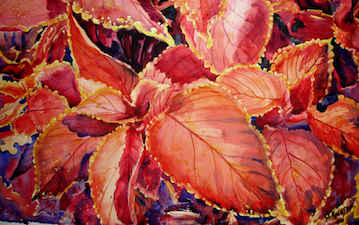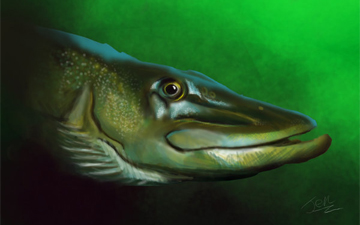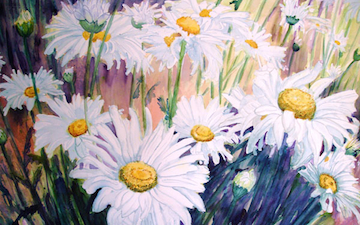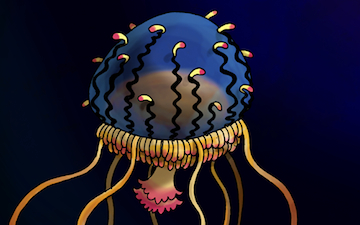For best results print the cards using the Firefox Browser
Cards
(QUICK LINKS: Decks | plants | mammals | birds | | reptiles | fish | cephalopoda | insects | microbe | events
( scientist | project | modifier | technique |)

Bluespotted Ribbontail Stingray
Taeniura lymma


Sorry, there is no photo available. If you have one, please submit
here
.
10 POINTS
• Taeniura lymma has a MOVE of 2.
• Taeniura lymma is a fairly small ray, not exceeding 35 cm.
Warm, Hot
Graphic by Steve Millerwww.torchbearerstudios.com/
The bluespotted ribbontail ray (Taeniura lymma) is a species of stingray in the family Dasyatidae. Found from the intertidal zone to a depth of 30 m (100 ft), this species is common throughout the tropical Indian and westernPacific Oceans in nearshore, coral reef-associated habitats. It is a fairly small ray, not exceeding 35 cm (14 […] read more

Painted Nettle
Solenostemon scutellarioides


Sorry, there is no photo available. If you have one, please submit
here
.
3 POINTS
• Solenostemon scutellarioides has a SPREAD of 1.
• Very easily propegated from cuttings.
Warm, Hot
Graphic by Pat Knorppp-e-a-k.deviantart.com/
Solenostemon scutellarioides is a species of perennial plant. Common names include Coleus orPainted Nettle. The Coleus plant has very colorful foliage and is popular as a houseplant and in gardens. Its geographic origin is Southeast Asia and Malaysia. The plant has various names, including “Coleus blumei“. The Coleus are very easy to propagate by cuttings, and they like […] read more

African Bush Elephant
Loxodonta africana


Sorry, there is no photo available. If you have one, please submit
here
.
4 POINTS
• Loxodonta africana has a MOVE of 2.
• Loxodonta africana is one of the largest living terrestrial animals.
Warm, Hot
Graphic by Adam Smithrupted.deviantart.com/
The African Bush Elephant or African Savanna Elephant (Loxodonta africana) is the larger of the two species of African elephant. Both it and the African Forest Elephant have usually been classified as a single species, known simply as the African Elephant. Some authorities still consider the currently available evidence insufficient for splitting the African Elephant […] read more

Northern Pike
Esox lucius


Sorry, there is no photo available. If you have one, please submit
here
.
9 POINTS
• Esox lucius has a MOVE of 2.
• Can be found in brackish and freshwaters of Canada and the United States.
Cold, Cool
Graphic by Jen Berrywww.jenberry.co.uk/
The northern pike (known simply as a pike in Britain, Ireland, or as jackfish in Canada and in the United States of America Esox lucius), is a species of carnivorous fish of the genus Esox (the pikes). They are typical of brackish and freshwaters of the northern hemisphere (i.e. holarctic in distribution). Northern pike are […] read more

Oxeye Daisy
Leucanthemum vulgare


Sorry, there is no photo available. If you have one, please submit
here
.
2 POINTS
• Leucanthemum vulgare has a SPREAD of 1.
The game “He loves me, he loves me not” is associated with this flower.
Cool, Warm
Graphic by Pat Knorppp-e-a-k.deviantart.com/
Ox-eye daisy flower The oxeye daisy (Leucanthemum vulgare, syn. Chrysanthemum leucanthemum), also known as the marguerite, is a widespread flowering plant native to Europe and the temperate regions of Asia. It is one of a number of plants to be called by the common name daisy. It is also sometimes called moon daisy or dog […] read more

Flower Hat Jelly
Olindias formosa


Sorry, there is no photo available. If you have one, please submit
here
.
10 POINTS
• Olindias formosa has a MOVE of 2.
Olindias formosa has a sting that is painful but non-lethal to humans.
Warm
Graphic by Adam Smithrupted.deviantart.com/
The flower hat jelly (Olindias formosa) is a rare species of jellyfish occurring primarily in waters off Brazil, Argentina, and southern Japan. Characterized by lustrous tentacles that coil and adhere to its rim when not in use, the flower hat jelly’s bell is translucent and pinstriped with opaque bands, making it easily recognizable. The flower […] read more